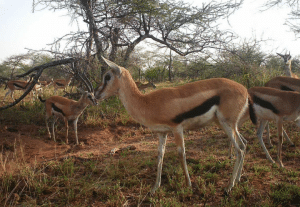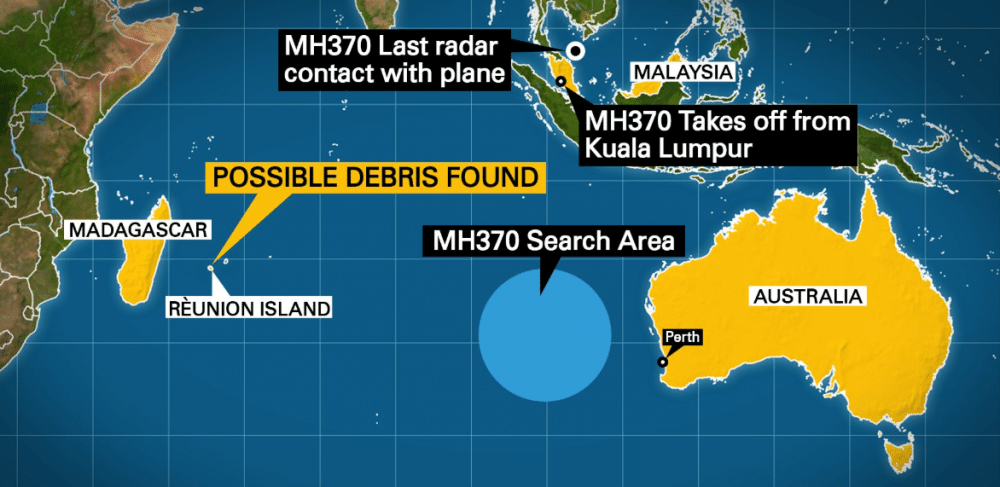How do you scan an area of 305,000 sq km (118,000 sq mi)? This was the challenge for several countries in 2014, trying to solve the mystery of the lost Malaysia Airlines Flight 370. Tremendous effort and resources were put into finding the airplane’s remains, including cutting edge scanning and mapping technology.
Along with ships and aircraft from Australia, China, India, Japan, Malaysia, New Zealand, South Korea, the United Kingdom, and the United States, another method was used – crowdsourcing. Since mechanically analyzing vast oceanic spaces would have taken too long, satellite images were made available to the general public by Tomnod (a project owned by Colorado-based satellite company DigitalGlobe) so they could help with the search.
Indeed, one of the most common applications of crowdsourcing is geospatial analysis and image recognition. Satellites collect millions of square kilometers of Earth imagery every day and generate huge quantities of data, which contain valuable information about events, locations, and objects across the globe.
How can we extract relevant and timely information from this influx of pixels? One way is to use artificial intelligence – machines that can analyze images and identify patterns or changes in such patterns (such as unusual behavior or sudden weather changes). A small group of analysts can also analyze those images and search for the same patterns, but they will always be limited in their capacity to process such large quantities of data. With crowdsourcing, tens of thousands of people can participate, and capacity increases ten-fold.
Crowdsourcing is all about massive, decentralized networks of individuals who work in synchrony to solve a problem and create new ideas. By using massive crowds, we expand our understanding of what images tell us about the world. These crowds uncover insights and accomplish feats that would be impossible for a single individual.
There are scores of examples, from finding child slaves in Ghana to identifying mass human rights violations in Syria, and from studying plant phenomics to assisting in medical imaging (most notably, fighting cancer).
 Crowdsourcing is even used to study and save wildlife: several years ago, thousands of scientists remotely scanned more than 200 hidden cameras in Serengeti National Park, Tanzania, capturing the secret lives of Serengeti’s animals.
Crowdsourcing is even used to study and save wildlife: several years ago, thousands of scientists remotely scanned more than 200 hidden cameras in Serengeti National Park, Tanzania, capturing the secret lives of Serengeti’s animals.
In another case, Wildlife Protection Solutions (WPS) teamed up with military reserves in South Africa and Indonesia to combat wildlife poaching through a series of connected camera traps. The images captured by these cameras were analyzed by remote volunteers from all over the world.
But this is just the beginning. The true potential of crowdsourcing for geospatial analysis and image recognition lies in the collaboration of crowds and artificial intelligence.
The automated analysis of highly congested, highly varied, crowded scenes is a challenging visual task. In fact, improving machine capabilities in analyzing such images has been the focus of the computer vision research community and private industry alike. The result is hybrid models, in which technologies such as computer vision, machine learning, and deep learning are leveraged and verified by large groups of humans, experts and laymen alike.
This is where big data, data science, and human-based analysis intersect: scores of sensors collect huge quantities of information, data science methodologies and techniques build deep learning models, and a continuous feedback loop is generated by humans who review images in large volume. This ensures scalability and control of data acquisition with growing, constantly improving datasets. It effectively steers the direction of growth so that datasets focus on real-world relevance, quality control, and data source diversity.
Crowdsourcing a task to thousands of people is better than using small groups of experts, but utilizing all possible resources – combining crowds and machines – gives a result that is greater than the sum of its parts.
Keeping up with the pace of new trends and developments in the world of crowdsourcing can be hard. To help, we are assembling global sector-leaders and top practitioners to speak in over 70 sessions at our major global conference in Washington D.C. this October, #CSWGlobal18, and they will share with delegates their latest thoughts, insights and results of recent activities. We have published an Agenda, and ticket registration is open with some time sensitive incentives available. We hope you can be there.




0 Comments